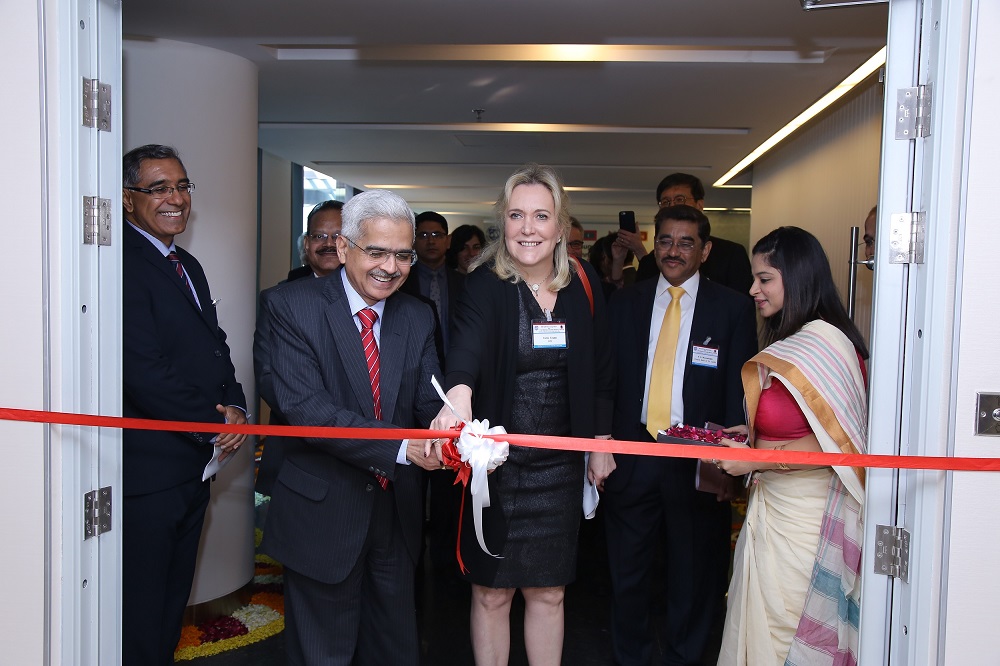Sean Culhane was Chief of Operations for the IMF’s Institute for Capacity Development from July 2013 until December 2018. During that time he led large multi-disciplinary teams to build centres in China and Mauritius that were comparable in size and scope to the centre in India featured in this article. On a day-to-day basis, he managed a team of 33 training and IT professionals in designing and executing the administrative, logistical, and technological aspects of delivering an annual program of 150 economic and financial seminars, workshops, and courses for over 15,000 officials from IMF-member countries and over 900 internal IMF staff at global centres.
When the International Monetary Fund (IMF) and the Government of India signed a now-historic agreement in March of 2016, it was difficult to imagine how this laudable and essential goal would become a reality. The agreement was to build and operate a center in New Delhi for delivering economic and financial training and technical assistance (collectively known as “capacity development”), to state and national government officials across six countries in South Asia.
Given the limited human and financial resources from the project’s sponsors, finishing the project within a reasonable time frame seemed unlikely. However, the center was built and in full operation by January 2017, and, as of November 2019, the centre – the South Asia Regional Training and Technical Assistance Center (SARTTAC) – and its year-round program of courses and hands-on technical assistance is already approaching full capacity. I led the building of SARTTAC in 10 months, requiring a partnership of key technical staff and managers from the IMF, senior officials from India’s Ministry of Finance, and an array of local private-sector talent.
Without India’s highly developed and talented private sector service providers, many of whom did not exist a generation ago, building and opening SARTTAC in 10 months would never have been possible. Indeed, one of the two biggest challenges to the project was where to find and muster the array of skills necessary. This included commercial property developers, architects and designers, construction contractors, manufacturers and suppliers of carpet and office furniture, to high-tech audio-visual equipment. Then we needed systems’ engineers with the talent to design and install a state-of-the-art training environment for public finance experts, national statisticians, central bank staff, and government macroeconomists from all over the region.
The other (and larger) challenge to this project, was to negotiate for the IMF and its private-sector experts to have a largely free hand in designing and building SARTTAC with financial support and governance from India, but no day-to-day control over the construction or design of the facility. The latter was essential because the IMF would be teaching the courses and delivering the technical assistance provided at the centre, and it was important that the complexity and breadth of the program offered at SARTTAC be as close as possible to what was offered to country officials at the IMF’s other global centres. Overcoming this challenge required some lengthy and complex negotiations between the IMF and senior Indian ministry of finance officials. Both partners had strong vested interests in getting SARTTAC up and running as quickly as possible and to ensure that the centre was world class in every aspect. The Indian authorities wanted to ensure there were appropriate levels of transparency and governance, since SARTTAC was being built with taxpayer funds.
The negotiations were ultimately successful – the IMF was the lead on the design and construction – because trust and open communications were established early in the process. The authorities were shown early designs of the floorplan, and were invited to provide comments and input, which were incorporated into the plans. They were invited to the building site at two stages during construction to see the progress, materials chosen, how the money was being spent, and to ask questions. Most importantly, the Indian officials demonstrated their commitment to the project not only through their generous financial support, but also through their willingness to meet with me and other team members on a regular basis, engage in the broader negotiation, and participate in site visits. This kept the whole project moving, even during times – such as the hot New Delhi summer – when work inevitably had to slow down.
From an HR perspective, managing interdisciplinary teams from a great distance and getting all team members to work well with each other and deliver their best work is challenging at the best of times. The challenges take on an extra layer of complexity when the organizational relationship is client-vendor rather than manager-subordinate. For the team leader, however, nurturing collaboration among vendors is one area where the extra layer of complexity I spoke of a moment ago is strikingly visible. Like professionals all working in one firm, the goal when coordinating the work of vendors is to get all team members to think of each other as colleagues, and to see where their contributions to the project fit with everyone else’s input. In the case of building SARTTAC, this challenge was helped by learning about and tapping in to a community of talent that has come to life over the last 20 years, supporting the burgeoning commercial development in Gurgaon and other cities around the greater New Delhi area. Piecing together a team of specialists who had worked together before and produced outstanding results for past clients was possible for SARTTAC. Being clear with them about the mission objectives and showing them how their work would translate into success for the IMF and for India too, boosted their motivation and ramped up their creativity.



